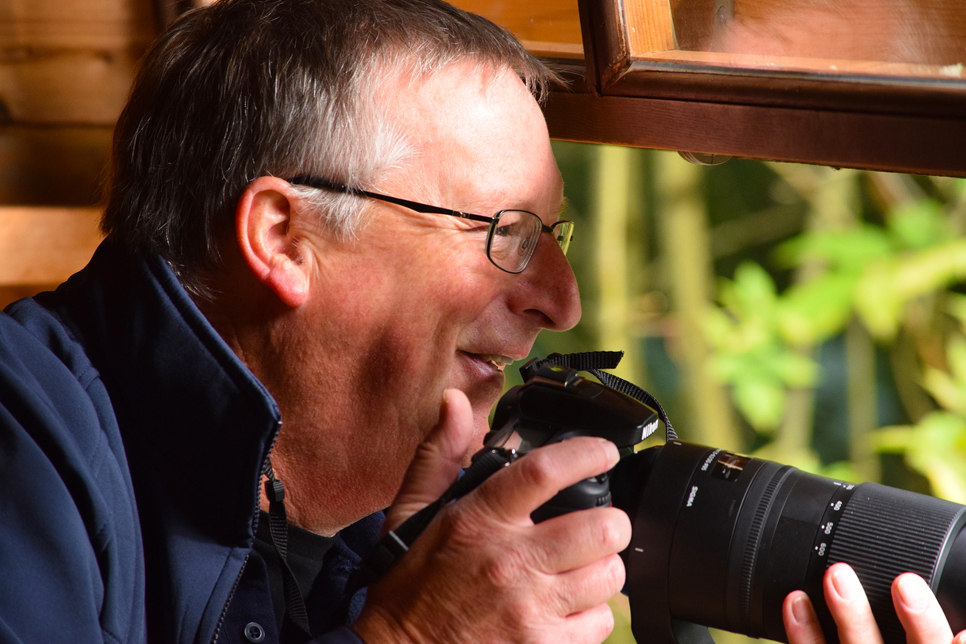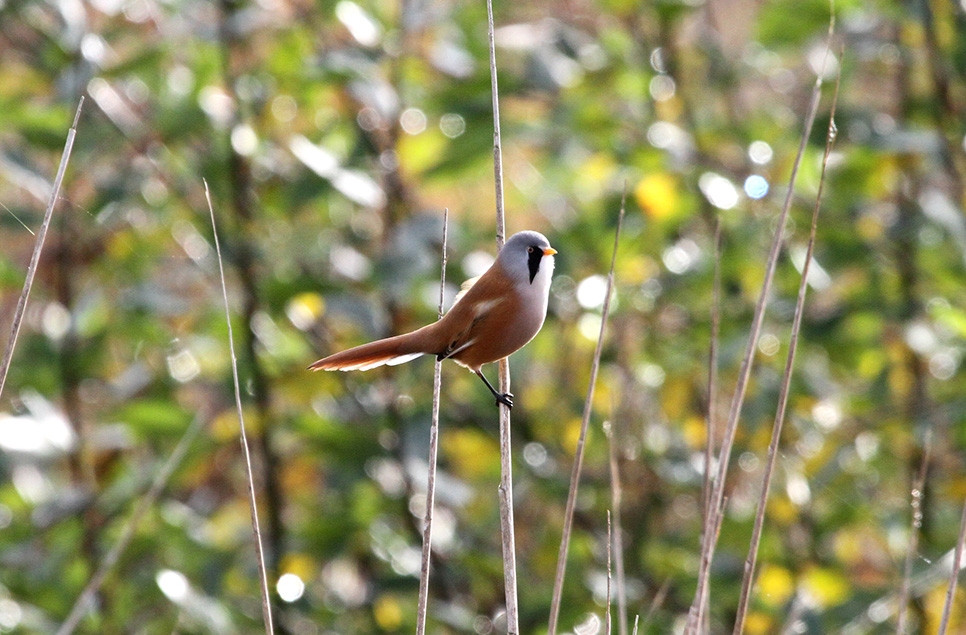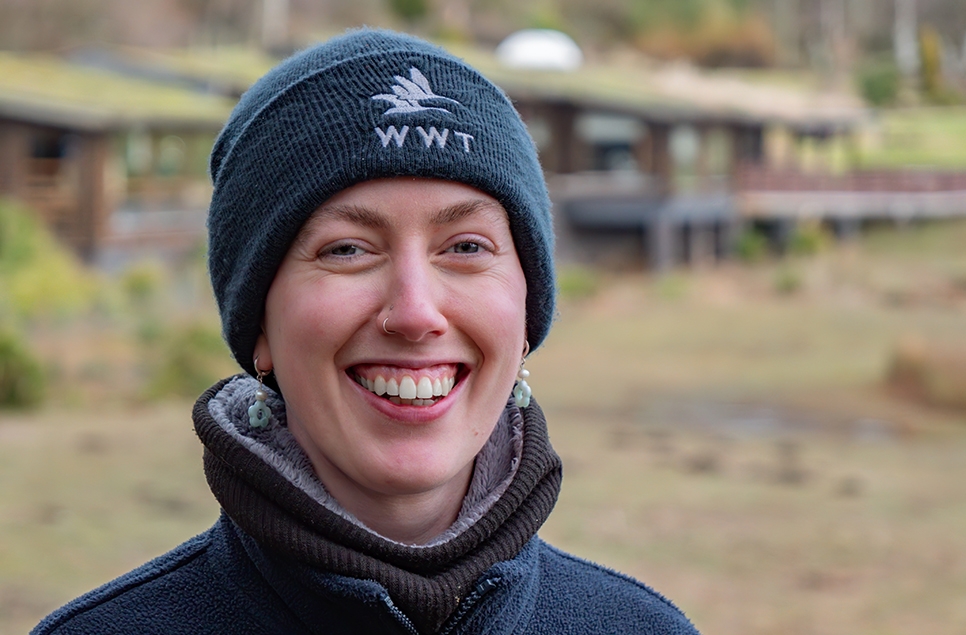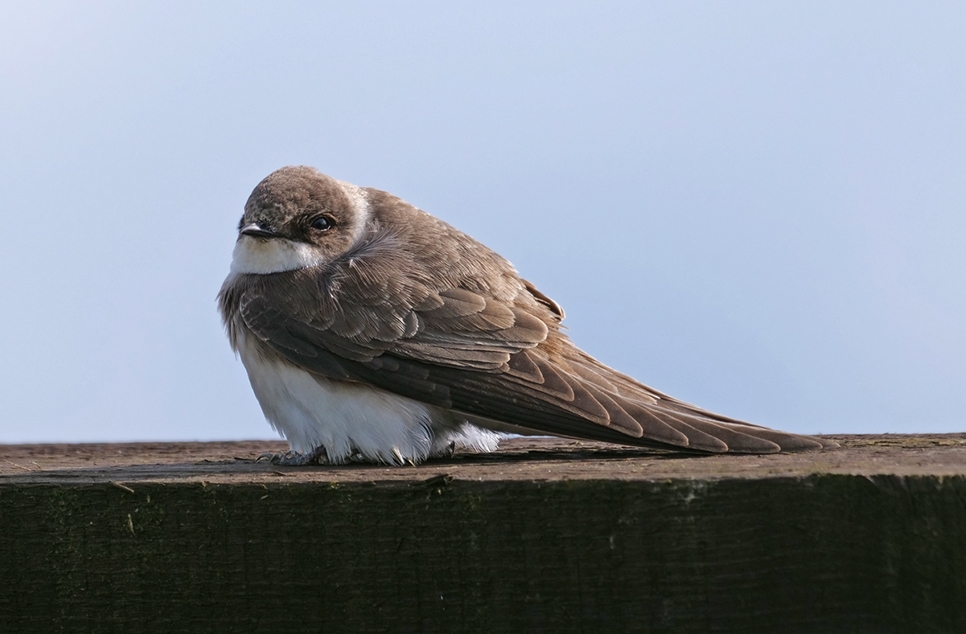Spotlight shines on WWT Washington's grey heron colony
WWT Washington Wetland Centre’s grey heron colony has been named one of the best in the UK by Countryfile magazine (http://www.countryfile.com/countryside/wildlife-watch-out-march).
 The heronry – one of the largest in the country – has been steadily increasing in size since first establishing in the 1980’s and the magazine recently told its readers that WWT Washington is one of five ‘great places’ to see a heron colony ‘in action’.
The heronry – one of the largest in the country – has been steadily increasing in size since first establishing in the 1980’s and the magazine recently told its readers that WWT Washington is one of five ‘great places’ to see a heron colony ‘in action’.
The first grey heron chick hatched at the Wearside reserve in 1989 and in the early 1990’s a CCTV system was installed, allowing visitors to become wildlife camera operators and watch these characterful birds at close quarters from Waterside Cafe.
Each breeding season, the grey herons turn the tree tops at Wader Lake into a bustling hive of activity.
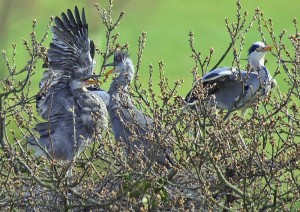 Upon their arrival in late January/early February they begin claiming and repairing old nests, arguing with neighbouring pairs as they jostle for space amongst the branches and swooping majestically down to the River Wear to feed.
Upon their arrival in late January/early February they begin claiming and repairing old nests, arguing with neighbouring pairs as they jostle for space amongst the branches and swooping majestically down to the River Wear to feed.
Breeding, laying and egg incubation follows, and when the chicks hatch in late March/early April it’s not long before their pushy parents are forcing them out of the nest and onto the shores of Wader Lake below to fledge.
This season, at least 27 nests are now occupied and the first chicks have just begun to hatch.
WWT Washington’s reserve manager John Gowland said: “Late January saw numbers increase from a handful of birds into double figures, with the return of breeding pairs.
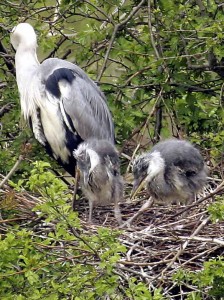 “By mid-February numbers had reached about 25, with most of the birds in full breeding display and nest-building. Late-February saw at least seven or eight birds sitting low down in the nest - a very good indication the birds are incubating eggs.
“By mid-February numbers had reached about 25, with most of the birds in full breeding display and nest-building. Late-February saw at least seven or eight birds sitting low down in the nest - a very good indication the birds are incubating eggs.
“Throughout March the numbers continued to increase and on March 11, 56 birds were recorded on Wader Lake.
“Now, the early nesting herons are starting to hatch chicks. It will probably be another week or two before we start getting good views of the young as they mature and begin peering out from their large nests.
“The last count indicated that we have at least 27 nests occupied, but it is tricky counting the north-facing nesting birds, so the number of actual nests will probably prove to be more.”
Did you know?...
The grey heron is a tall bird with a long neck, legs and a dagger-like bill. Its upper parts are grey, but the head, neck and belly are white. The crest is black and it has black markings on the throat. Juveniles are darker with much less white and lack the long crest plumes.
Their call is a loud, harsh "frarnk", which is often used in flight.
Grey herons mainly eat fish, amphibians and small mammals, and occasionally will take other smaller birds, chicks and eggs. When feeding they are very patient, and will stand still for long periods, silently stalking their prey.
They usually nest in tall trees with other herons to form a heronry. Their nests are large platform-like structures made from twigs and are built by both male and female birds.
Breeding starts in late January/early February and clutch sizes range from two to seven eggs, which are roughly 60x43 mm and a pale greenish-blue. Between one and three clutches are laid per season.
The male and female share the incubation of the eggs, as well as feeding the young, and incubation lasts between 23-28 days. The young fledge in 42-55 days.
